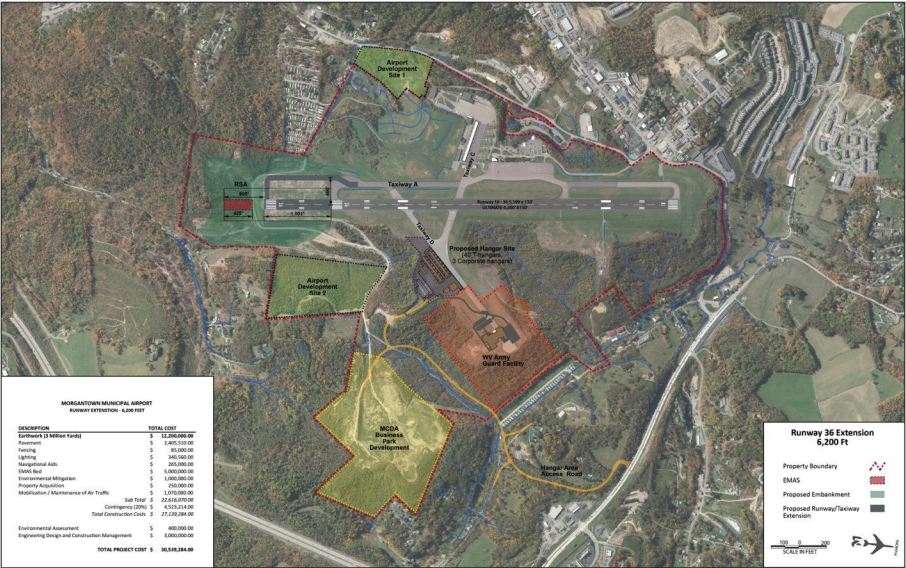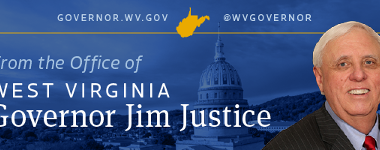MORGANTOWN, W.Va. — In the 1930s, the city of Morgantown purchased a sizable area of land near the Mileground in Morgantown to construct an airfield. Construction began in 1935, and on November 9,1937, the Morgantown Municipal Airport (MGW) took flight.
Over the last 78 years, however, the Morgantown airport has not seen the expansion that other municipal airports have. Even today, one carrier, a subsidiary of United, offers only four daily flights to and from Washington Dulles airport Monday through Friday and two on the weekends.
Morgantown residents, including students, faculty and sports teams at West Virginia University, have long complained that the Morgantown airport fails to meet their needs, forcing them to drive an 1 1/2 hour to Pittsburgh.
“Getting [to Pittsburgh] and back can be a nightmare,” says Steven Accardi, a WVU student. “It would be so much better if Morgantown had more connections besides Dulles.”
That’s why many residents were cheered when they heard about the airport’s planned expansion in the news last year. But even though the airport is now planning to expand its runway to 6200 feet, no new commercial carriers will be coming to town, city officials say.
Once the expected expansion is completed — in two years’ time — the only jets landing at Morgantown airport will be private corporate planes carrying top executives from Mylan or other Morgantown businesses, says Glen Kelly, acting airport Director and assistant City Manager.
Up till now, the airport runway was too short to accommodate jets larger than the 34-seat propeller planes used by Silver Airways, United’s subsidiary, to fly between Morgantown and Dulles.
The extension will add 1,001 more feet to the south end of Morgantown Airport’s runway, making its total length 6,200 feet.
“When it’s wet and snowy, a typical big business aircraft can’t land here, so they have to go elsewhere,” Kelly says.
With the planned expansion, the runway will grow to 6200 feet — long enough to accommodate larger jets such as Bombardier CRJ 900 and Embraer 170. However, because of Morgantown’s status as an Essential Air Service (EAS) market, the airport is supported by federal funding. The Essential Air Service market program was put into place as a safety net for small communities in order to maintain a minimal level of scheduled air service.
Kelly says that if the airport allows another commercial carrier to fly in and out of Morgantown, the city would lost that underwriting.
“Because we have an EAS service, if we take on another commercial carrier we would lose that underwriting,” said Kelly.
Some residents feel they’ve been sold a bill of goods.
“You would assume the expansion would mean more flights for residents,” says Ally Brandfass, a Morgantown resident. “[The expansion] doesn’t seem to directly benefit residents.”
In nearby Harrison County, the North Central West Virginia Airport in Clarksburg currently offers seasonal non-stop flights to Myrtle Beach and to Orlando, Florida. While the Clarksburg airport is also small, its runway length has an asphalt surface at 7,800 feet, much longer than Morgantown’s even with the extension.
“I would love to get to the point where we have a Myrtle Beach flight, [but] we don’t have the runway length nor will we,” Kelly says.
However, city officials see other benefits to the planned expansion. According to city officials, the Morgantown Municipal Airport is partnering with the Air Force Reserve on a runway extension project that could save at least $8 million in construction costs for the runway extension. The cost of the project is expected to be roughly $30.5 million. Because of this partnership, the city of Morgantown would get five annual $1 million allotments from the Federal Aviation Administration (FAA) for the project, plus $3 million from WVU.
Bill Kawecki, Morgantown Second Ward Councilor, explained that the airport expansion would allow the city to develop a new industrial park nearby.
“This gives us the capability for additional businesses and will give us the additional revenue, and that in turn will be good for the city’s services,” Kawecki says.
Kawecki also says the runway extension will benefit the university, particularly its athletic program since competing sport teams will then be able to fly in on specially chartered flights.
“It will be good for the university being in the Big 12 Conference,” says Kawecki.
The runway expansion is part of a larger construction project at the airport that includes the demolition of old hangars and new hangar construction. The new access road from Easton Hill to the National Guard Readiness Center is almost complete and will open by the end of the month.
Some students and residents remain unmollified. Accardi, who comes from Boston and has to fly into Pittsburgh and then take a bus to Morgantown every time he turns to WVU, says he is disappointed Morgantown airport won’t be able to accommodate more commercial flights.
“[The expansion] is not doing well at all for the average resident,” Accardi says. “It’s doing well for the wealthy businessmen who can afford private flights.”
EDITOR’S NOTE: The Mountaineer News Service is produced by journalism students at West Virginia University. Students from the WVU Reed College of Media report, write and produce multi-platform news and feature packages about newsworthy subjects in West Virginia.





